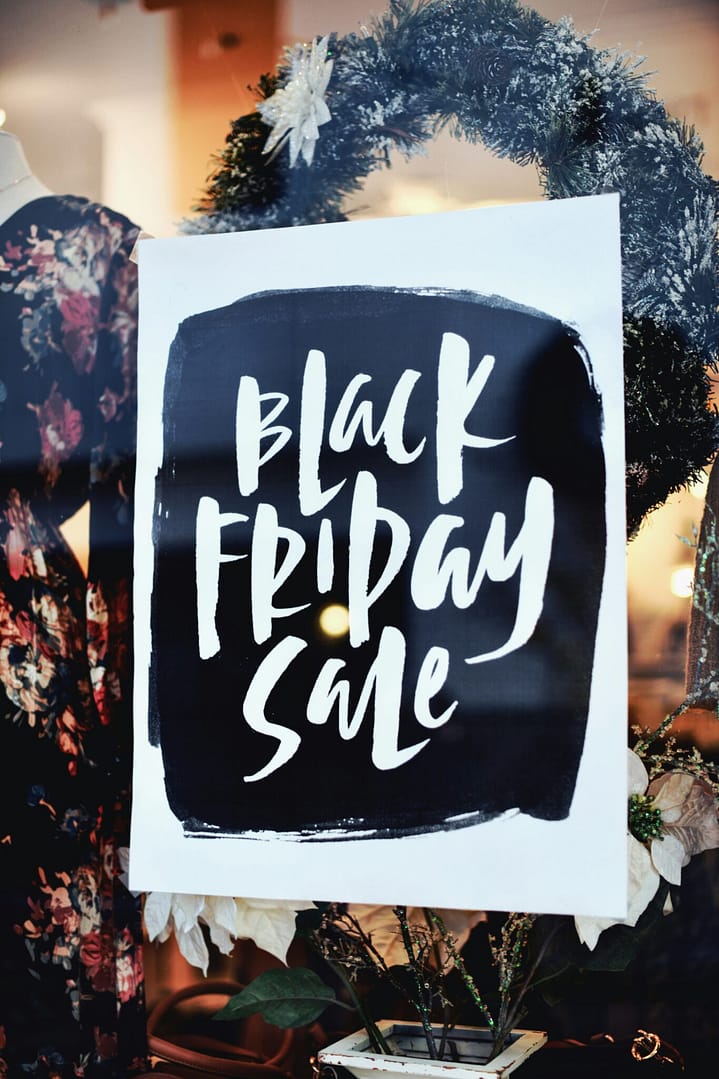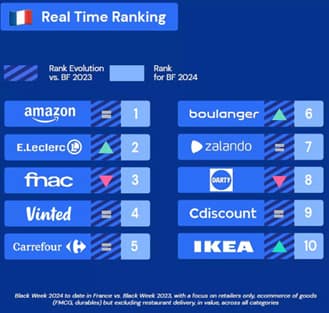
Black Friday: A Double-Edged Opportunity For Retailers And E-Commerce Leaders
Black Friday is often seen as the highlight of the shopping year. In 2024, the figures are impressive: in France, growth is close to 5% compared with the previous year, and the dynamic is better in shop than online (Webinar Fevad: Black Friday 2024). Shopify set a world record with €5 billion in transactions, an average basket up by €110.93, and remarkable performances in categories such as high-tech, homeware and cosmetics. Major players such as Amazon, E.Leclerc and Ikea have also confirmed their dominance of e-commerce, thanks to attractive promotions and proactive management of their offer (source: Journal du Net in French).
+ 150%: the difference in sales volumes between Black Friday week and the average for all weeks in 2024 (Webinar Fevad)
It is also important to note that the weight of discounted sales volumes (over 15%) is higher online than in physical stores. This is because consumers, whose purchasing intentions are up on last year, are taking advantage of bigger promotions in e-commerce than in-store! (Webinar Fevad)
If we had to sum up, two words would suffice: edifying results!
But behind these apparent successes, one key question remains: is Black Friday really profitable for retailers and e-tailers?
The Hidden Aspects Of Black Friday
1. Excessive Focus On The Top Line
For many players, Black Friday means an explosion in sales and an increase in turnover (+175% – average turnover of PricingHUB customers on 29 November 2024). But this performance often masks a darker reality: the collapse in net margins.
Indeed, net margins are often sacrificed to offer aggressive discounts, especially when reductions are applied uniformly without strategic analysis. One solution to cushion this impact is to negotiate solid back margin contracts with suppliers. These contracts allow part of the discounts to be recovered in the form of post-sale rebates or financial bonuses, thereby improving overall margins after the event.
An inspiring example: On average, our customers recorded an impressive increase in sales of +175% during Black Friday. However, their margins plummeted by -200%, revealing a promotional strategy that sacrificed profitability in favour of volume (average result for PricingHUB customers on 29 November 2024).
This dynamic highlights a frequent paradox: a Black Friday that boosts the ‘top line’ (i.e. sales) to the detriment of the ‘bottom line’ (i.e. net profits).
2. Average Shopping Basket Under Pressure
rease in the overall average shopping basket in 2024, this trend is not uniformly observed. In many cases, the frantic search for the ‘best deals’ is leading to low-value purchases, limiting average basket growth. High volumes of low-margin transactions often undermine overall profitability.




